Leo Kottke – ‘Even His Feet Look Sad’
Bert Jansch & John Renbourn – ‘Tic-Tocative’
Andy McKee & Don Ross – ‘The Thing That Came from Somewhere’
This week we’re going to try to sketch a portrait of a nebula of music–call it a style or a genre or whatever you like–that for the sake of convenience you can call it New Acoustic.
 Or Fingerpicking. Or American Primitive. Or Folk Baroque. It’s been going on for threescore years, but still has no clearly defined history or borders (born in the early 1960s more or less simultaneously in the US and in the UK, with almost no cross-pollination). Or even a name for heaven’s sake!
Or Fingerpicking. Or American Primitive. Or Folk Baroque. It’s been going on for threescore years, but still has no clearly defined history or borders (born in the early 1960s more or less simultaneously in the US and in the UK, with almost no cross-pollination). Or even a name for heaven’s sake!
It even has a first cousin it’s easily confused with, Newgrass (Bela Fleck, Chris Thile, Mike Marshall, Edgar Meyer, as well as frequent visitors such as Jerry Garcia, Yo Yo Ma, Mark O’Connor and Dave Grisman).
Perhaps it’s best to explain New Acoustic by two examples that you probably know.
Remember Paul Simon’s guitar solo ‘Anji’ from the “Sounds of Silence” album?
Oh, I loved that song.
That’s New Acoustic.
Remember Pentangle?
Oh, I loved Pentangle.
They’re New Acoustic.
But the whole thing is as hard to grab hold of as a passle of melted jello on a Georgia highway in the middle of a highway in the middle of the day in the middle of July. So anything I say here is based on the most superficial, off-the-cuff, unfounded lack of knowledge you can imagine. Just picture me on that Georgia highway trying to pick up the jello.
There’s tons and tons of this stuff, so I’m just going to give you a link or two for each of the gents here. For a change, nothing exhaustive. You’ll have to do the legwork yourselves.
What can we say about New Acoustic? Well, to a great degree it’s intelligent and sophisticated. virtuosic instrumental music (sans vocals), fingerpicked on a 6-string steel string guitar (or 12-string, or banjo), using old blues and country technique, often with open tuning, infused with influences from far abroad, such as Indian ragas.
Early US Fingerpicking
John Fahey (1939-2001) was a key figure “the first to demonstrate that the finger-picking techniques of traditional country and blues steel-string guitar could be used to express a world of non-traditional musical ideas — harmonies and melodies you’d associate with Bartok, Charles Ives, or maybe the music of India.” Here’s ‘Poor Boy Long Ways from Home’ from his seminal 1964 album “The Legend of Blind Joe Death”. Fahey established Takoma Records in the early 1960s, which kickstarted the careers of fingerpicking disciples Leo Kottke and Robbie Basho.
Leo Kottke (1945-) is perhaps the best-known card-carrying representative of New Acoustic. Despite near deafness and an insistence on staining his performances with vocals (which he acutely describes as “geese farts on a muggy day”), he’s had a long and fruitful career. If you’re interested in delving into this morass, Kottke’s probably the best place to start. I find him impressive, enjoyable, entertaining. I’d gladly go see him perform. Start with the 1971 “6 and 12 String Guitar”. But be sure you get to his brilliant, bizarre, hilarious rambling monologs.
Robbie Basho (1940-1986) is understandably less well-known than Kottke and Fahey, darker and more challenging. ‘Haunting’ is his epithet. Check out ‘Song of the Stallion’– somewhere between those two disparate Johnsons, Antony and the-, and Blind Willie. With a little bit of Shlomo Carlebach thrown in. A genuinely riveting weirdo.
Sandy Bull (1941-2001) was the subject of a very recent Song of The Week, and all the enthusiastic responses to it encouraged me to try to slop all this melted jello into a box. Sandy is even less well known than Basho, to whom he’s often compared. Because he’s even further down the garden path. Which is of course why I love him so.
Meanwhile, back in the Old Country—
Early UK Fingerpicking
Davey Graham (1940-2008), shared with Basho and Bull a background in folk/blues and the eagerness of the ’60s psychedelic rockers to stretch out and incorporate unpredictable influences into his music. In 1961 he composed ‘Anji’, (covered by Bert Jansch in 1965 as ‘Angie’ and famously by Paul Simon in 1966).
Bert Jansch (1943-2011) is probably the best-known habitué of the New Acoustic world. Coming from a Scottish/English folk background, inspired by Graham, he in turn had a profound influence on people such as John Renbourn, Donovan, Paul Simon, Jimmy Page and Neil Young, who said that Jansch did for the acoustic guitar what Hendrix did for the electric. As with Kottke and many others, we usually try to avoid Jansch’s vocals (‘Needle of Death’). He’s perhaps best known for leading Pentangle, together with his buddy John Renbourn. My personal favorite of Jansch is his uncategorizable, atypical 1979 LP, “Avocet”, one of my most listened-to albums over the years.
John Renbourn (1944-2015) began as a soloist, made a mark in pairings with Jansch in “Bert and John” (‘East Wind’), before they went on to form—
Pentangle, an acoustic folk-jazz ensemble with Jansch and Renbourn on acoustic guitars, Jacqui McShee in waifish vocals, the wonderful Danny Thompson on double bass and Tony Cox on drums. Almost everyone I know seems to have listened to them frequently in college.
And that just gets us up to 1968.
And Then…
There have been generations of young explorers from Australia to Zimbabwe who can pick more notes than the number of ants on a Tennessee anthill. I’ve far from mastered this list, but I’ll try to give you a few quick pointers:
John Martyn (1948-2009) – a major artist, not strictly of this school, but employing with great success in his own unique singer-songwriter style. Much recommended. SoTW 166
Duck Baker (b. 1949) – a quirky favorite of mine, he recorded an entire album of the music of Herbie Nichols, the greatest unknown jazz pianist of the 1950s (SoTW 91). That’s the kind of cosmic synchronicity that gives me a warm, gooey feeling.
Phil Keaggy and Mike Pachelli (both b. 1951)
Dave Evans (b. 1953) – “Sad Pig Dance” is one fine album.
Michael Hedges (b. 1953)
Tommy Emmanuel (b. 1955)
Brooks Williams (b. 1958) – likened to James Taylor, which ain’t a bad thing
Don Ross (b. 1960)
Jack Rose (1971)
Andy McKee (b. 1979) – new age wiz, 56 million hits on this little gem
James Blackshaw (b. 1981)
Those fingers just keep picking. I haven’t found enough meat on the bones of those fingers to delve into this ocean obsessively and exhaustively, as is my wont. With the possible exception of Sandy Bull (and of course John Martyn), I’ve never found it to be life-changing music. Entertainment, rather than High Art. But I do keep returning to it. I hope you find it appealing. If you find anything indispensable, do let me know.


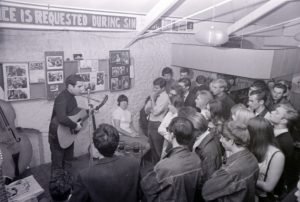
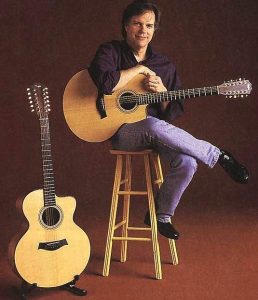
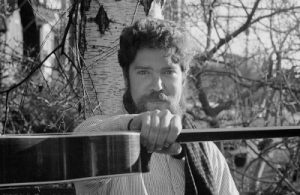
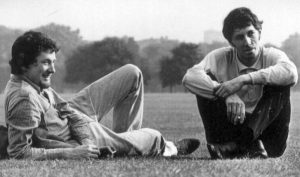



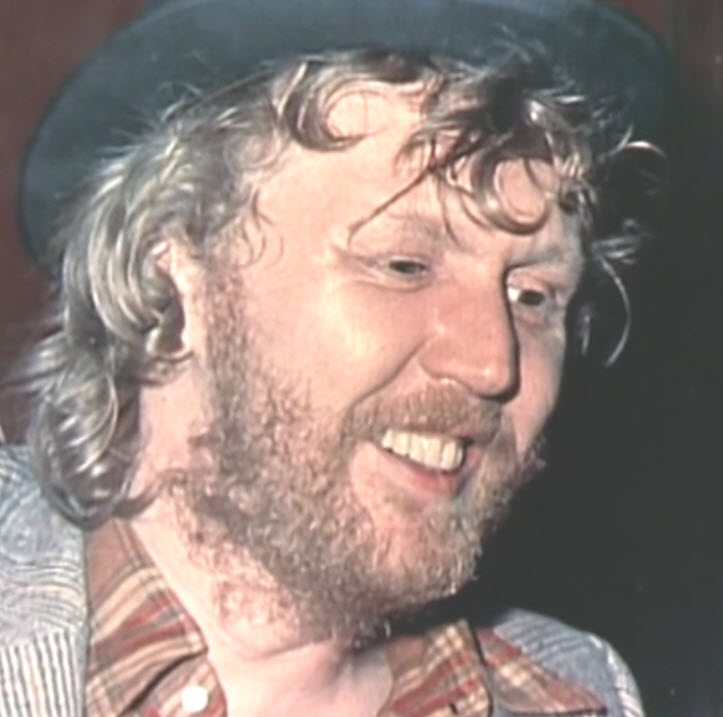

Dear Jeff,
Thanks for the gift of copper wound sounds hitting the naked air to bring us into the New Year!
(As you know, one of my most treasured of sounds, featuring the 88 of course.)
Shabbat Shalom.
Dear Jeff,
Thanks for your excellent compilation of artists, they do are among my favourite acoustic folk musicians ..
It’s strange you haven’t mentioned tough In the list the great Michael Hedges which I think was the one who re-invented the contemporary acoustic guitar and the features of a new diverse attitude of playing.
All the best for the year 2018
Massimo
Thanks for the tip on Michael Hedges. I didn’t know him, and he sounds fascinating.
Just came across this site and am just beginning to jump in. I can see rushing would be inadvisable considering the breadth of offerings and the way you have set the place up, with lots of sonic detours a click away.
We are about the same age and appear to have similar tastes, and that helps too. I also like that you come at music by listening and not dwelling overly on extra-musical considerations, which has been a constant problem since I started listening (mostly to rock, especially prone to extra-musical pull) around the same time as you.
Re this post: as long as you are including pickers who also sing and do not only pick what about Incredible String Band–Williamson and Heron? Maybe you have written about them before and since I am only a newbie I may come to them here in time.
You asked for website and I blog at the Uncouth Reflections site above. I write more about politics, film and higher education than I do music but I make the jump from time to time, and when I do I tend to write in the wandering and discursive style that I get from your posts. In fact here is a wandering post on ISB.
https://uncouthreflections.com/2012/12/17/incredible/
Looking forward to delving.
On the tab “What’s New” in my blog you can find an (almost updated) index of all postings. HTH.
Saw The Incredibles in 1969. Dunno, they never grabbed me. My loss, I understand.
I came upon this week’s SoTW while engaged in an epic battle with this season’s flu bug. What I assumed would be a momentary diversion quickly became a soothing journey, a balm of comfort and coziness. I’ve listened to them all and am going for seconds. Just what I needed with my chicken soup.
Thank you for sharing.